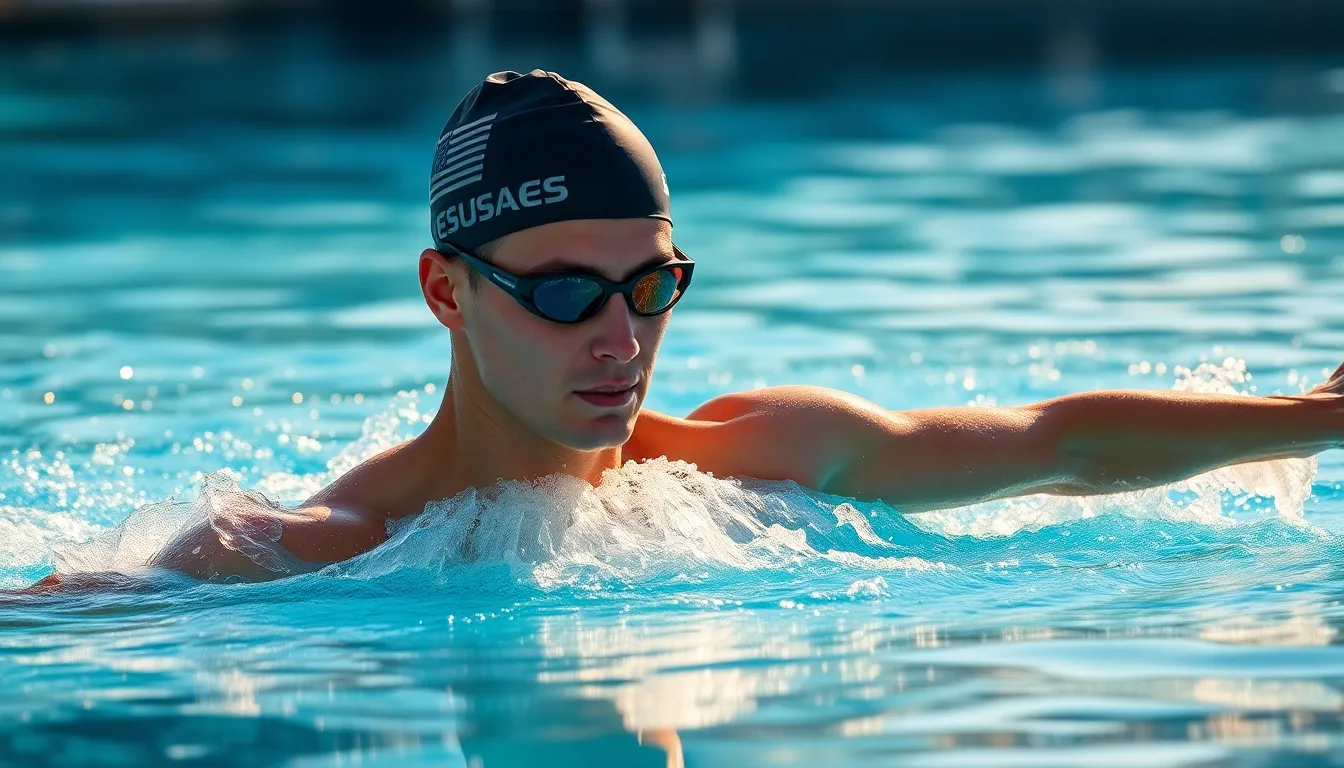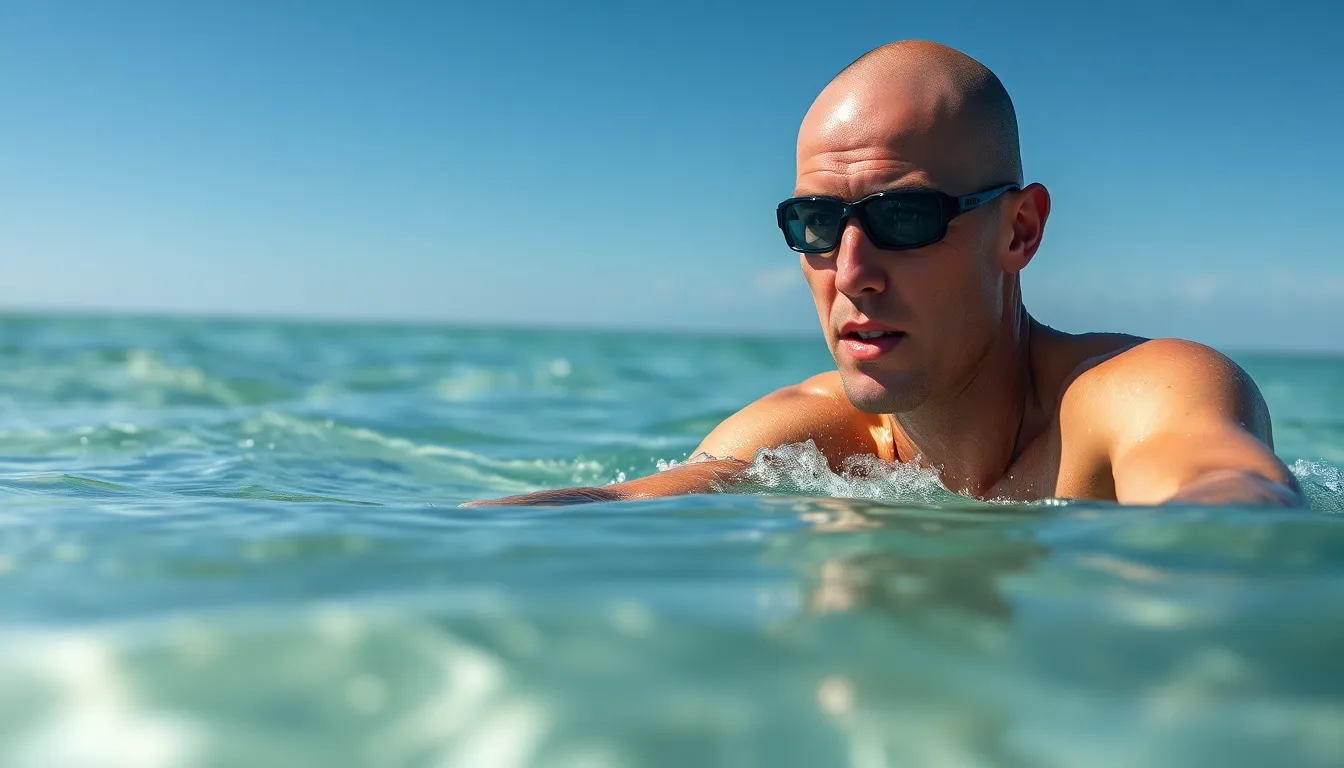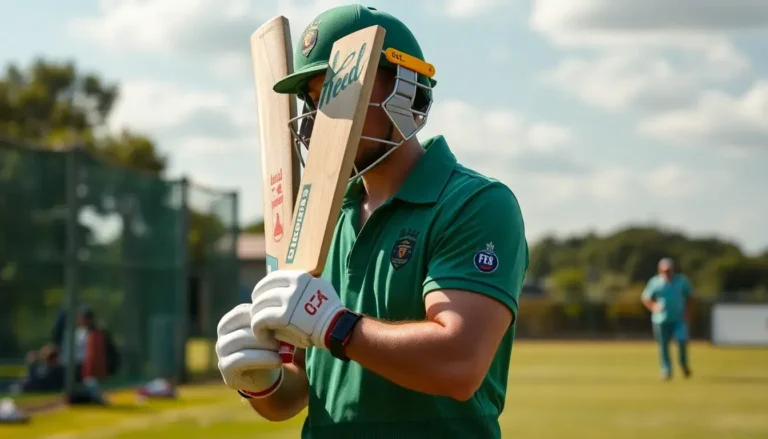Table of Contents
ToggleTriathlon training swim is a crucial component for any aspiring triathlete. It’s not just about splashing through water; it’s about mastering technique, building endurance, and developing confidence in the water. With the swim leg often being the first challenge in a triathlon, effective training can set the tone for the entire race.
Many athletes underestimate the importance of swim training, yet it can be the difference between a successful race and a struggle. Whether you’re a beginner or an experienced competitor, understanding the nuances of swim training can enhance performance and improve overall race times. Dive into the essentials of triathlon swim training and discover how to optimize your workouts for peak performance on race day.
Understanding Triathlon Training Swim
Triathlon swim training is essential for triathletes, focusing on technique, endurance, and water confidence. Swimmers must master their skills to excel in this critical first leg of the race.
Importance of Swimming in Triathlon
Swimming forms the foundation of a triathlon, setting the overall tone of the race. Athletes benefit from improved swimming performance, which translates into better race times. Effective swim training enhances endurance, enabling athletes to complete the 1.5 km (Olympic) or 3.8 km (Ironman) distances efficiently. Additionally, superior swimming skills boost confidence, allowing athletes to tackle open water conditions with ease and control.
Overcoming Common Swimming Challenges
Triathletes often face several swimming challenges. Some of these challenges include:
- Anxiety: Open water can evoke fear; mastering breathing techniques helps manage anxiety.
- Technique: Poor stroke mechanics hinder performance; incorporating drills enhances efficiency.
- Endurance: Low stamina affects swim leg pacing; interval training builds endurance and strength.
- Sighting: Navigating in open water can disorient swimmers; practicing sighting techniques maintains direction.
By addressing these challenges, athletes increase their competitiveness and improve their overall triathlon experience.
Essential Swim Techniques

Triathletes can significantly improve their swim performance by mastering essential techniques. Focused training on these elements enhances efficiency and builds confidence in the water.
Freestyle Swimming Tips
- Breathe rhythmically: Coordinate breath with strokes to maintain momentum and airflow.
- Engage core: Strengthening core muscles stabilizes the body and aids in streamlined movement.
- Use a relaxed kick: A steady, less forceful kick maintains buoyancy without wasting energy.
- Maintain a high elbow: Position the elbow above the hand during the pull phase for better propulsion.
- Focus on wrist position: Keeping wrists relaxed reduces drag and improves stroke effectiveness.
Stroke Efficiency and Body Position
- Optimize body alignment: Maintain a horizontal position in the water to minimize resistance.
- Utilize proper hand entry: Enter the water with fingertips first to reduce splash and increase glide.
- Implement catch phase: Initiate a strong catch to propel forward effectively with each stroke.
- Develop rotation: Rotate the hips and shoulders to enhance the reach and increase power.
- Practice sighting techniques: Regularly practice sighting to remain oriented without disrupting stroke rhythm.
Swim Training Plans
Swim training plans vary based on an athlete’s experience level and goals. Structured workouts help triathletes improve technique, stamina, and speed.
Beginner Swim Workouts
Beginner swim workouts aim to establish a strong foundation in swimming skills. Focus on mastering proper technique, breathing, and comfort in the water. Each workout should include warm-up, drills, and cool-down segments.
| Workout Type | Duration | Key Focus |
|---|---|---|
| Warm-up | 5-10 mins | Easy swim, freestyle |
| Drills | 15-20 mins | : |
| – 3x50m catch-up drill, focusing on front arm extension | ||
| – 4x25m vertical kick for core strength | ||
| Main Set | 15-25 mins | – 4x100m at an easy pace with 20 seconds rest |
| Cool Down | 5-10 mins | Easy swim, breaststroke or backstroke |
Aim for three to four swim sessions per week, gradually increasing the distance as confidence builds.
Intermediate and Advanced Swim Workouts
Intermediate and advanced swim workouts focus on enhancing endurance and speed. These sessions incorporate varied distances and intensities, challenging both aerobic and anaerobic capacities.
| Workout Type | Duration | Key Focus |
|---|---|---|
| Warm-up | 10 mins | Easy swim, mixed strokes |
| Drills | 20 mins | : |
| – 5x100m pull buoy, focusing on upper body strength | ||
| – 4x50m one-arm freestyle, alternating arms for technique | ||
| Main Set | 30-40 mins | – 5x200m at race pace with 30 seconds rest |
| – 10x50m sprint with 1-minute rest | ||
| Cool Down | 10 mins | Easy swim, mix of strokes |
Aim for four to six swim sessions weekly, varying workouts to build speed, endurance, and technique under race conditions.
Open Water vs. Pool Swimming
Open water swimming and pool swimming each present distinct challenges and benefits. Athletes must recognize these differences to optimize their training for triathlons.
Adapting to Open Water Conditions
Adapting to open water conditions requires specific skill sets. Athletes face variables such as current, waves, and temperature, which can impact performance. Effective acclimatization to these factors occurs through consistent practice in outdoor settings. Training in open water helps improve sighting skills, as visibility differs from a pool environment. Learning to navigate while swimming ensures better line efficiency during races. Athletes typically develop stronger mental resilience through exposure to unpredictable conditions.
Benefits of Pool Training
Benefits of pool training include controlled environments and consistent conditions. Pool training allows athletes to focus on refining technique without interruptions. Controlled water temperatures, lighting, and lane markings facilitate effective workouts and facilitate precision in stroke mechanics. Additionally, pools provide ample opportunities for drills aimed at improving propulsion and minimizing drag. Athletes can easily measure distances and monitor split times, enabling targeted assessments of performance improvements. Regular pool workouts aid in building endurance and speed through interval training, crucial for overall swim performance in triathlons.
Nutrition and Recovery for Swimmers
Proper nutrition and effective recovery are key elements for swimmers in triathlon training, directly influencing performance and overall wellness.
Importance of Proper Nutrition
Proper nutrition fuels swim training and supports recovery. Triathletes require a balanced diet rich in carbohydrates, protein, and healthy fats. Carbohydrates serve as the primary energy source, while protein aids in muscle repair and recovery. Healthy fats contribute to sustained energy levels. For optimal performance, swimmers should consume nutrient-dense foods, such as whole grains, lean proteins, fruits, and vegetables. Staying hydrated with water or electrolyte drinks before, during, and after training further enhances performance and prevents fatigue. For example, consuming a carbohydrate-rich snack, like a banana or energy bar, within 30 minutes after a swim helps replenish glycogen stores efficiently.
Recovery Techniques for Optimal Performance
Recovery techniques play a vital role in preparing swimmers for subsequent training sessions. Active recovery, such as light swimming or yoga, alleviates muscle soreness and promotes blood circulation. Stretching and foam rolling help maintain flexibility and reduce tension in muscles. Adequate sleep is essential; aiming for 7-9 hours each night allows the body to repair and adapt to training demands. Additionally, integrating rest days into training schedules prevents overtraining and supports mental freshness. Post-training, techniques like ice baths or contrast showers can minimize inflammation and expedite recovery. Combining these strategies ensures swimmers remain physically and mentally prepared for ongoing training and competition.
Triathlon swim training is a vital component that can significantly influence overall performance. By focusing on technique endurance and mental resilience athletes can transform their swim leg into a strong advantage. Embracing the challenges of both pool and open water swimming prepares competitors for race day while refining their skills.
Incorporating tailored training plans and prioritizing nutrition and recovery ensures that athletes maintain peak performance. With dedication and the right strategies swimmers can confidently face the water and set a positive tone for their triathlon journey. Engaging in consistent practice and honing essential techniques will lead to improved race times and an enhanced triathlon experience.




